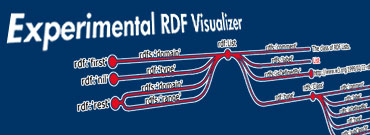 |
» |
|
|  |
 |
| |
 |
Research focus |
 |
 |
 |
HP Labs has been at the forefront of Semantic Web research since 2000, helping to create the standards, contributing key technology pieces, conducting basic research and building Semantic Web applications. |
 |
 |
 |
Current work |
 |
 |
Our research group aims to offer HP customers and partners the benefits of Semantic Web through:
- standards work via the W3C to support the growth of the Semantic Web
- tools development to encourage the exploration and exploitation of the Semantic Web by developers
- core research to help develop the field
- applications research to demonstrate the value of Semantic Web
- consultancy within HP to promote its use within the company
Integrating or searching across disparate data sources requires a modeling language to represent data and metadata, as well as a way of describing the underlying information model. You need to be able to represent the concepts in your domain and the relationships between them. Such an information model is called an ontology.
The Semantic Web provides a set of open standards for data modeling and information modeling, and for manipulating the resulting data. We have or are currently contributing to all these standards:
- RDF -- The Resource Description Framework is a standard for describing data and metadata.
- OWL -- Web Ontology Language describes the information model.
- SPARQL -- SPARQL Protocol and RDF Query Language (which is on the way) will enable queries of data collections in RDF format.
|
 |
Technical contributions |
 |
 |
Most Semantic Web applications are now built using tools created by HP Labs -- in particular, Jena (the most popular Semantic Web application tool kit) and Joseki (the most popular Semantic Web server).
We have also worked with customers on Semantic Web applications -- in collaboration with HP Services. For example, we built a pilot educational portal based around Semantic Web technology for the Singapore government and piloted an information management system for a major oil and gas company.
In addition, we have prototype applications for use by consumers, such as our semantic blogging system, and a system for searching and browsing pictures on the Web using location and direction information.
|
|
 |
|
Information management |
 |
|
|
|
